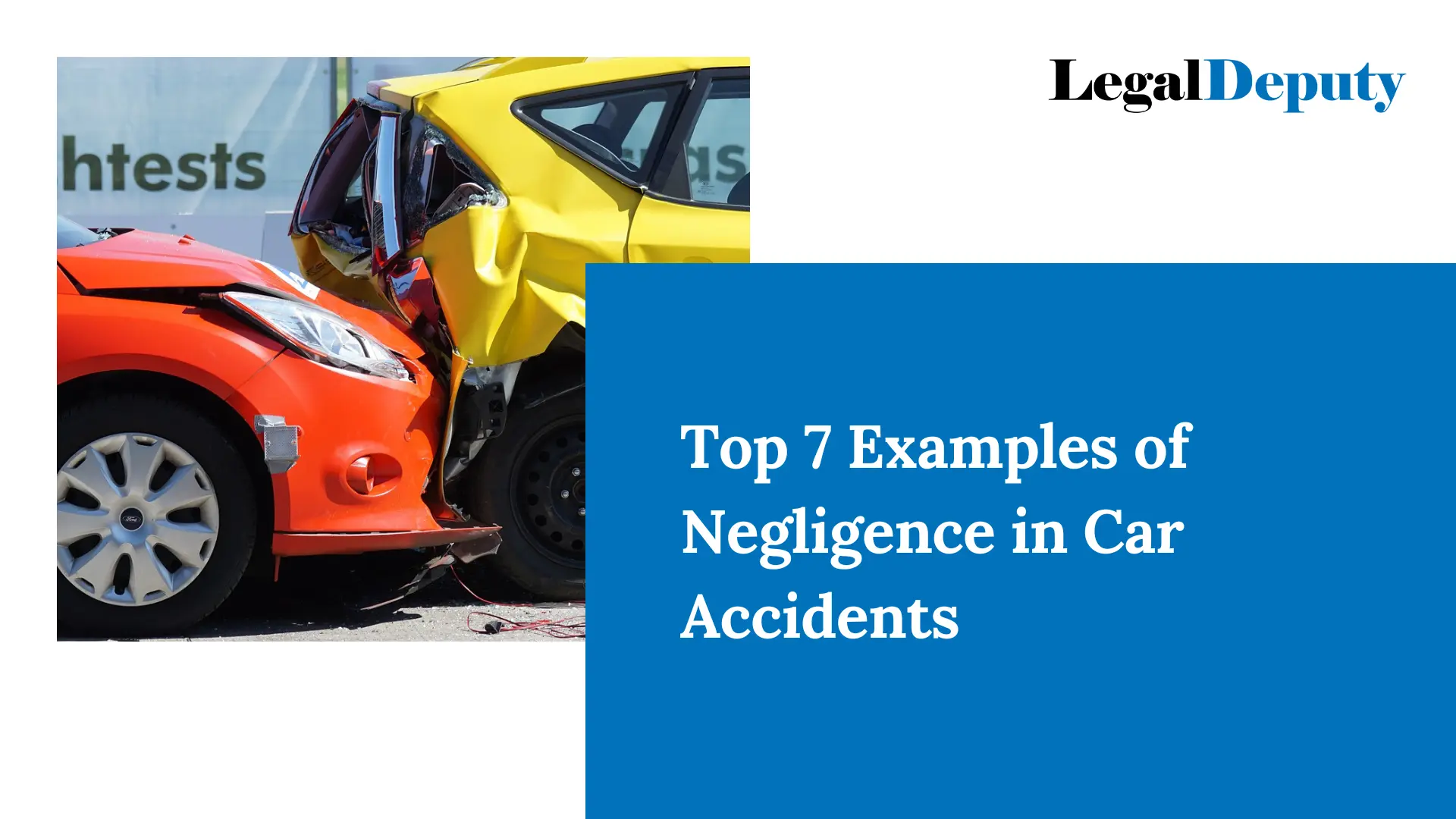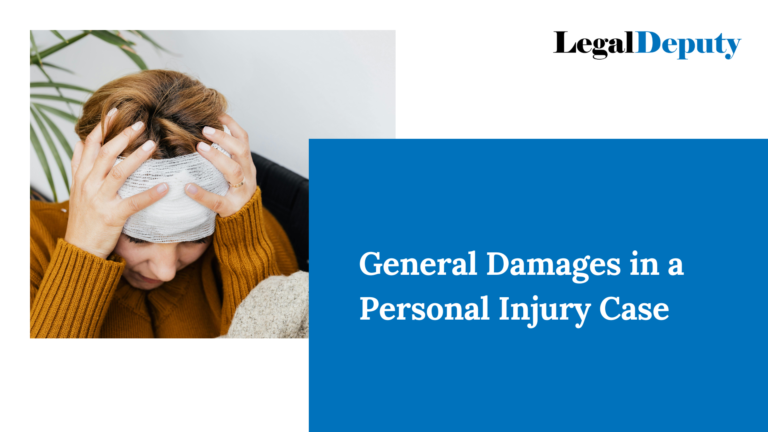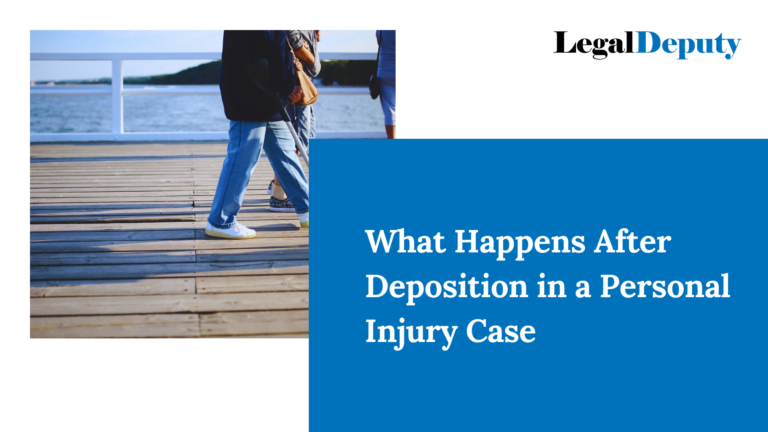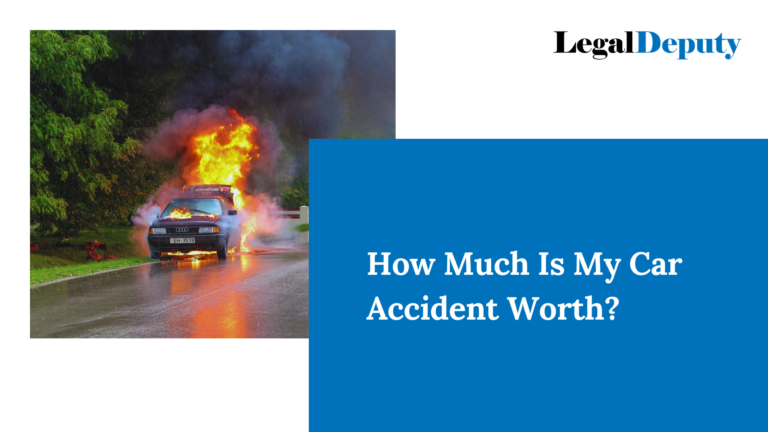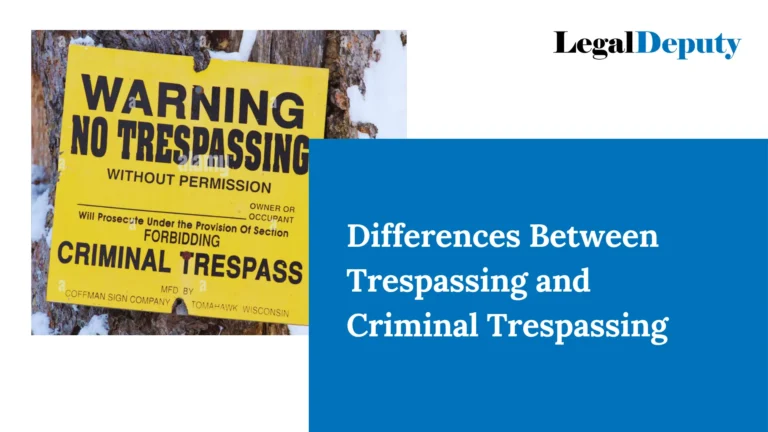Top 7 Examples of Negligence in Car Accidents | Ultimate Guide
Car accidents can be life-altering, leading to injuries, financial losses, and emotional distress. When someone else’s carelessness or recklessness causes an accident, the victim may be entitled to compensation through a personal injury claim. Understanding the role of negligence in these cases is crucial for anyone involved in a car accident. This blog will explore various examples of negligence in car accidents, helping you understand how these scenarios apply to personal injury cases in the United States.
What is Negligence?
Negligence is a legal concept central to most personal injury cases, including car accidents. It refers to the failure to exercise the care that a reasonably prudent person would under similar circumstances. When a driver fails to act responsibly and causes harm to others, they can be held legally accountable for the resulting damages.
In the context of car accidents, proving negligence typically involves demonstrating that the other driver failed to adhere to the standard of care required by law, leading directly to the accident and your injuries.
Types of Negligence in Car Accidents
Below, we’ll discuss some common types of negligence in car accidents, illustrated with real-life examples and legal implications.
1. Distracted Driving
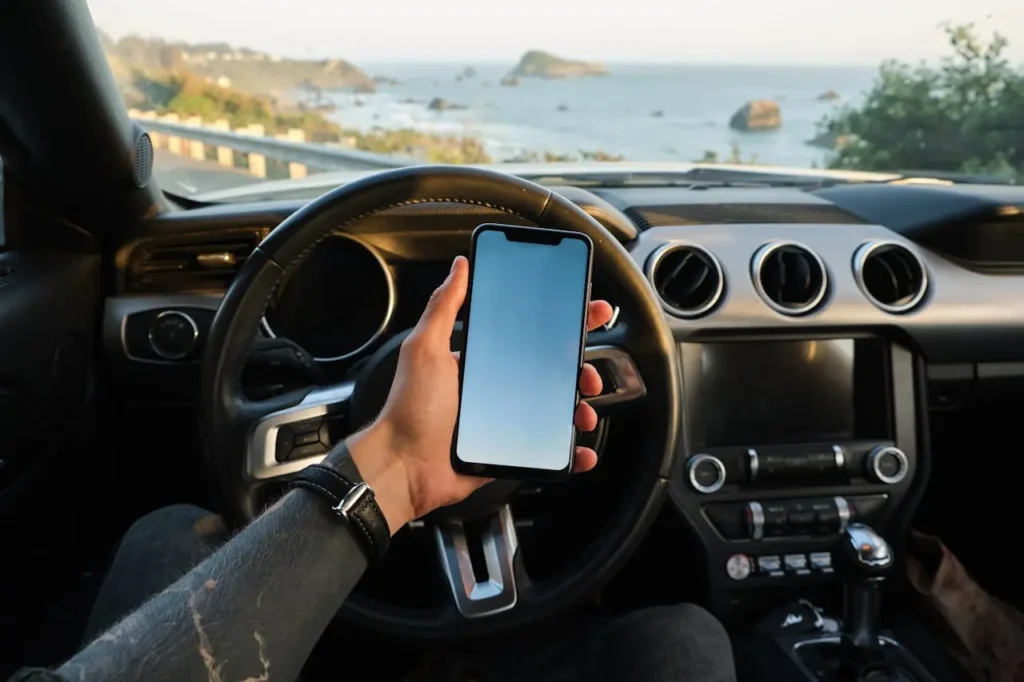
Explanation:
Distracted driving occurs when a driver’s attention is diverted from the road by activities like texting, eating, adjusting the radio, or talking on the phone. This behavior is one of the leading causes of car accidents in the U.S.
Example:
Consider the case of a young professional, Alex, who was driving home after a long day at work. While stopped at a red light, Alex received a text from a colleague about an important meeting the next day. Without thinking, Alex picked up the phone to reply, barely noticing the light turn green. Distracted by the conversation, Alex didn’t see the car ahead suddenly brake to avoid a pedestrian. As a result, Alex rear-ended the car, causing significant damage and injuries to the driver. The investigation revealed that Alex had been texting at the time of the accident. This lapse in attention not only led to a costly accident but also a lawsuit, where Alex was held liable for the injuries and damages due to distracted driving.
Legal Implications:
In cases like this, proving that the driver was distracted at the time of the accident is crucial. Evidence such as phone records, eyewitness testimony, or surveillance footage can help establish negligence.
2. Driving Under the Influence (DUI)
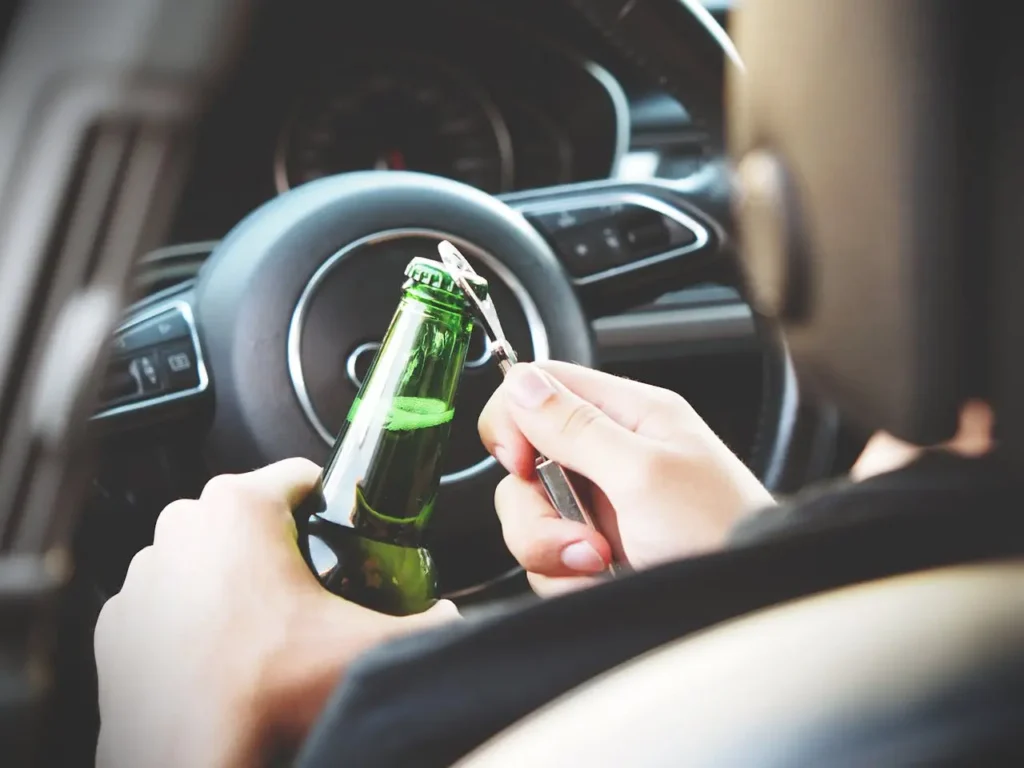
Explanation:
Driving under the influence of alcohol or drugs significantly impairs a driver’s ability to operate a vehicle safely. DUI is a serious offense and a clear example of negligent behavior that endangers everyone on the road.
Example:
Imagine a scenario where John, after attending a friend’s birthday party, decided to drive home despite having several drinks. Feeling confident that he wasn’t too impaired, John got behind the wheel. While driving through a residential area, his reflexes were slower than usual, and he failed to notice a stop sign at an intersection. John ran the stop sign and collided with another car crossing the intersection, causing severe injuries to the other driver. The police arrived at the scene and conducted a breathalyzer test, revealing that John’s blood alcohol content was well above the legal limit. John was not only charged with DUI but also faced a personal injury lawsuit. The court held him fully responsible for the accident, emphasizing the severe consequences of driving under the influence.
Legal Implications:
DUI cases often result in both criminal charges and civil liability. The intoxicated driver can be held liable for damages in a personal injury lawsuit, with evidence like breathalyzer results and police reports proving negligence.
Want a Free Consultation?
3. Speeding

Explanation:
Speeding, or driving above the posted speed limit, reduces a driver’s reaction time and increases the severity of accidents. It is a common form of negligence that frequently contributes to serious injuries and fatalities on the road.
Example:
Sarah was running late for an important meeting and decided to speed down a busy highway, going 20 miles per hour over the speed limit. As she approached a curve in the road, she didn’t slow down enough to maintain control of her car. Sarah’s vehicle skidded on the wet pavement and veered into the opposite lane, crashing head-on into another car. The other driver suffered multiple injuries, including broken bones and a concussion. An accident reconstruction expert later testified that the collision could have been avoided if Sarah had been driving within the speed limit. Her decision to speed not only endangered her life but also caused significant harm to another person, leading to a successful personal injury lawsuit against her.
Legal Implications:
Speeding is often straightforward to prove using evidence such as traffic camera footage, skid marks, and accident reconstruction reports. This evidence can demonstrate that the driver’s negligence in speeding directly caused the accident.
4. Reckless Driving

Explanation:
Reckless driving involves operating a vehicle in a manner that shows a willful disregard for the safety of others. This can include aggressive driving behaviors such as tailgating, weaving in and out of traffic, and excessive speeding.
Example:
Tom, an impatient commuter, was frustrated by the slow-moving traffic on his way to work. In a rush to reach his destination, Tom began weaving in and out of lanes, tailgating other drivers, and honking aggressively. At one point, Tom attempted to pass a car on the right, but the lane was about to merge. As he sped past, he clipped the rear bumper of the car he was trying to overtake, causing both vehicles to spin out of control and crash. The reckless maneuver resulted in a multi-car pileup, with several drivers sustaining injuries. Witnesses reported Tom’s erratic behavior to the police, and he was cited for reckless driving. In the ensuing legal battle, Tom was found liable for the accident and faced multiple claims for damages due to his reckless driving.
Legal Implications:
Reckless driving is often easier to prove than other types of negligence due to the observable nature of the behavior. Witnesses, traffic cameras, and even dashcam footage can be used to establish the driver’s recklessness.
5. Failure to Obey Traffic Signals

Explanation:
Traffic signals and signs are in place to regulate the flow of traffic and ensure safety. Ignoring these signals, such as running a red light or failing to yield, can lead to catastrophic accidents.
Example:
Jessica was driving through a familiar neighborhood when she approached a four-way stop. Confident that no other cars were around, she barely slowed down before rolling through the stop sign. However, at that exact moment, another vehicle was crossing the intersection legally. Unable to stop in time, Jessica’s car slammed into the side of the other vehicle, causing significant damage and injuring the driver. The police report noted that Jessica failed to obey the stop sign, which directly led to the accident. The injured driver filed a lawsuit, and Jessica was found negligent for not stopping at the intersection. The case underscored the importance of obeying traffic signals, as even a brief lapse in judgment can have serious consequences.
Legal Implications:
Accidents resulting from failure to obey traffic signals are often straightforward in terms of liability. Eyewitnesses, traffic cameras, and physical evidence from the scene can all be used to prove negligence.
6. Driving While Fatigued

Explanation:
Fatigue impairs a driver’s reaction time, decision-making abilities, and overall alertness. Driving while fatigued can be as dangerous as driving under the influence, as it increases the likelihood of accidents.
Example:
Mark, a long-haul truck driver, had been on the road for nearly 14 hours straight, pushing through his exhaustion to make a delivery deadline. Despite feeling drowsy, he decided to continue driving without taking a break. In the early morning hours, Mark’s eyelids grew heavy, and he momentarily nodded off. During that split second, his truck drifted into the adjacent lane, sideswiping a passenger car and forcing it off the road. The driver of the car suffered severe injuries, including a fractured spine. An investigation revealed that Mark had violated federal regulations by driving beyond the allowed hours without rest. The trucking company and Mark were both held liable for the accident, illustrating the dangers and legal consequences of driving while fatigued.
Legal Implications:
Fatigue-related negligence can be challenging to prove but is often supported by evidence such as driver logs, eyewitness accounts, and the driver’s work schedule. In some cases, expert testimony may be needed to establish the link between fatigue and the accident.
7. Tailgating

Explanation:
Tailgating, or following another vehicle too closely, is dangerous because it reduces the time and space available to react to sudden stops or changes in traffic. This aggressive driving behavior often leads to rear-end collisions.
Example:
During rush hour traffic, Emily was anxious to get home and was tailgating the car in front of her, hoping to push through the congestion faster. When the driver ahead had to make an abrupt stop to avoid hitting a pedestrian, Emily didn’t have enough time to react. Her car slammed into the back of the other vehicle, causing a chain reaction involving two more cars behind her. The accident led to multiple injuries and extensive vehicle damage. Police determined that Emily’s aggressive tailgating was the primary cause of the crash. In the subsequent lawsuit, she was held liable for the damages, highlighting the risks associated with following too closely on the road.
Legal Implications:
Tailgating is typically a clear-cut case of negligence, especially in rear-end collisions. Evidence such as damage patterns, eyewitness testimony, and traffic camera footage can help establish that the driver was following too closely.
Bonus Point: Improper Lane Changes

Explanation:
Improper lane changes occur when a driver fails to signal, checks their blind spot, or cuts off another vehicle. These negligent actions can lead to sideswipe collisions and other accidents.
Example:
Mike was driving on a busy highway when he realized he needed to take the next exit. Without signaling, he quickly swerved into the right lane, cutting off another driver. The abrupt lane change caused the other driver to brake suddenly, but they were unable to avoid a collision with Mike’s car. The impact sent both vehicles careening into the guardrail, resulting in significant injuries and vehicle damage. Witnesses reported that Mike had made the lane change without checking his blind spot or signaling. The police cited him for making an improper lane change, and he was found negligent in the personal injury lawsuit that followed. This incident serves as a cautionary tale about the importance of making safe and legal lane changes while driving.
Legal Implications:
Proving negligence in improper lane change cases often relies on eyewitness accounts, traffic cameras, and police reports. The driver’s failure to signal or check for oncoming traffic can be used as evidence of negligence.
Proving Negligence in a Car Accident Case
To successfully claim compensation in a negligence-related car accident case, you must establish the following elements:
- Duty of Care: The driver had a legal responsibility to act in a manner that would not cause harm to others on the road.
- Breach of Duty: The driver breached this duty through their negligent actions.
- Causation: The breach of duty directly caused the accident and resulting injuries.
- Damages: You suffered actual damages, such as medical expenses, lost wages, and pain and suffering, due to the accident.
Common types of evidence used to prove negligence include:
- Police reports
- Witness statements
- Traffic camera footage
- Photographs of the accident scene
- Medical records
Importance of Legal Representation
Navigating a personal injury case, especially one involving complex negligence issues, can be challenging without legal expertise. A personal injury lawyer can help you:
- Gather and preserve crucial evidence
- Negotiate with insurance companies
- Prove negligence and establish liability
- Maximize your compensation
If you’ve been involved in a car accident caused by someone else’s negligence, it’s important to seek legal advice as soon as possible. An experienced attorney can guide you through the process and ensure your rights are protected.
Conclusion
Understanding the different types of negligence in car accidents is essential for anyone involved in a personal injury case. Whether it’s distracted driving, DUI, or reckless behavior, knowing how these actions can impact your case will better equip you to pursue the compensation you deserve. If you’ve been injured in a car accident, consider consulting with a personal injury lawyer to discuss your options and take the next steps toward recovery.
Want a Free Consultation?
FAQ Section
1. What should I do if I’m involved in a car accident where the other driver was negligent?
If you’re involved in a car accident where the other driver was negligent, first ensure that you and others involved are safe and seek medical attention if needed. Call the police to file an accident report and gather evidence, such as photos of the scene, contact information of witnesses, and the other driver’s insurance details. It’s also crucial to contact a personal injury lawyer as soon as possible to discuss your case and understand your legal options.
2. How do I prove the other driver was negligent?
Proving negligence involves demonstrating that the other driver failed to exercise reasonable care and that their actions directly caused the accident and your injuries. Evidence such as police reports, eyewitness testimony, traffic camera footage, and expert analysis (like accident reconstruction) can all help establish negligence. Your attorney will guide you through the process of gathering and presenting this evidence.
3. What compensation can I receive in a negligence car accident case?
In a negligence car accident case, you may be entitled to compensation for various damages, including medical expenses, lost wages, property damage, pain and suffering, and emotional distress. In some cases, punitive damages may also be awarded if the other driver’s behavior was particularly reckless or egregious.
4. How long do I have to file a lawsuit after a car accident?
The time limit for filing a lawsuit, known as the statute of limitations, varies by state. In most states, you have between two to four years from the date of the accident to file a personal injury lawsuit. However, this timeframe can vary depending on the specifics of your case, so it’s important to consult with a personal injury lawyer as soon as possible.
5. Can I still recover damages if I was partially at fault for the accident?
Yes, you may still be able to recover damages even if you were partially at fault, depending on your state’s laws. States follow different rules regarding comparative negligence. In a “comparative negligence” state, your compensation may be reduced by your percentage of fault. In some states with “contributory negligence” laws, you might not be able to recover any damages if you are found to be even slightly at fault. An attorney can help you understand how these laws apply to your case.
6. Should I accept a settlement offer from the insurance company?
It’s generally advisable not to accept the first settlement offer from an insurance company without consulting a lawyer. Insurance companies often aim to settle claims quickly and for as little money as possible. A personal injury lawyer can negotiate on your behalf to ensure you receive fair compensation that covers all your damages.
7. How much does it cost to hire a personal injury lawyer?
Most personal injury lawyers work on a contingency fee basis, meaning they only get paid if you win your case. The lawyer’s fee is typically a percentage of the settlement or court award, usually ranging from 25% to 40%. This arrangement allows you to pursue your claim without any upfront legal fees.
Related Blogs:
7 Reasons Your Personal Injury Case May Go To Trial
What Happens After Deposition in a Personal Injury Case
Disclaimer:
The information provided in this blog, “Top 7 Examples of Negligence in Car Accidents”, is intended for general informational purposes only and does not constitute legal advice. While we strive to provide accurate and up-to-date information, the content of this blog may not reflect the most current legal developments or interpretations.
Readers should not act or refrain from acting based on the information contained herein without seeking appropriate legal or other professional advice on the specific facts and circumstances at issue from a licensed attorney in the relevant jurisdiction. This blog is not intended to create, and receipt of it does not constitute, an attorney-client relationship between the reader and the author or the author’s affiliated organization.
All liability with respect to actions taken or not taken based on the contents of this blog is expressly disclaimed. The information is provided “as is”; no representations are made that the content is error-free.
For specific legal advice regarding your personal injury case or any other legal matters, please consult with a qualified legal professional.

